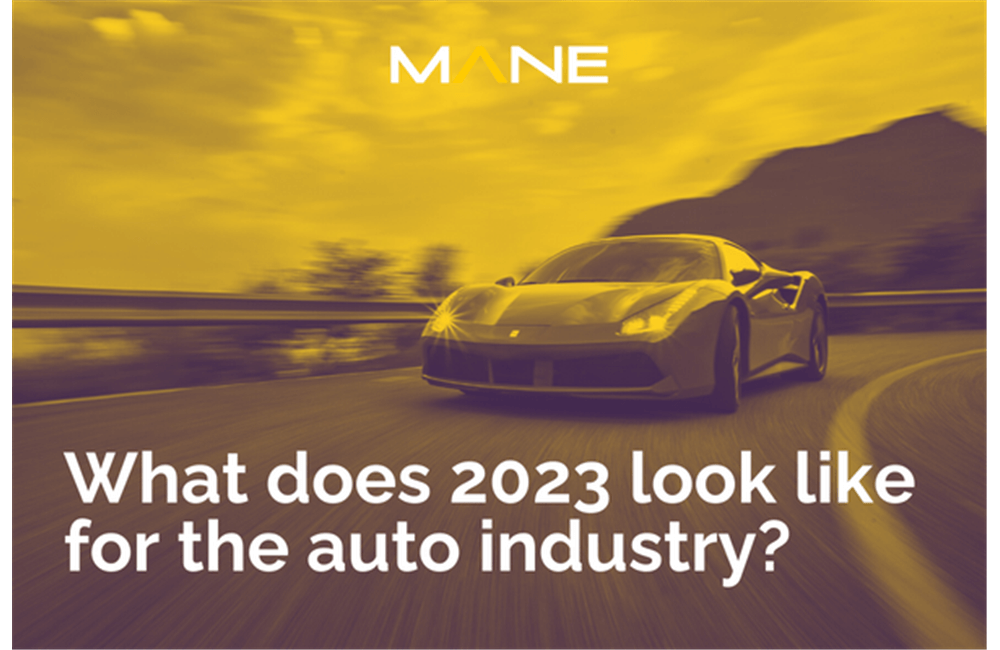What does 2023 look like for the auto industry?
16 Jan, 202310 minsAs the automotive industry recovers from the pandemic, it’s on the verge of another re...

As the automotive industry recovers from the pandemic, it’s on the verge of another revolution: electrification. Being prepared will separate the winners from the losers.
Economy
The global rise in interest rates has stifled industrial growth and investment. Although automakers are free to set their own interest rates for vehicle sales, the cost-of-living crisis means a new car will be the last thing on many consumers’ minds in 2023.
Supply chain
The pandemic and the war in Ukraine have disrupted automakers’ supply chains, in particular the supply of wiring harnesses from Ukraine and the supply of virtually everything from locked-down China. Automakers are now working to reverse several decades of effort towards globalising supply chains and find more reliable supplies closer to home–which is likely to mean paying more.
Semiconductors
Two years in, the global semiconductor shortage is still the main factor slowing down vehicle production. During the pandemic, scarce supplies of semiconductors were snapped up by other industries while automakers were struggling to get production back up and running.
Building a semiconductor factory would cost tens of billions of pounds, so automakers have no choice but to switch to newer chip designs that are being produced at higher volumes. However, they’ve been suspiciously slow to engineer this change into internal-combustion vehicles.
The resulting production slowdown provides a convenient excuse to lay off workers ahead of the switch to electric vehicles–which need fewer workers to produce–and to focus on only the highest-value models, providing a tidy profit to offset the current unprofitability of electric vehicles.
Electrification
The typical relationship between suppliers and OEMs can’t keep up with the rapid evolution of technology and demand in the electric vehicle market. Tesla’s in-house design and production facilities have demonstrated the benefits of agility, especially during the chip shortage.
Battery cell manufacturers and OEMs are setting up joint ventures to spread the financial risk, while research continues to find an alternative to scarce lithium, which is likely to start running out as early as 2026.
Battery price parity
“Price parity” will be achieved the day internal-combustion and battery-electric vehicles cost the same. Scaling up battery production should theoretically drive costs down, but significant price reductions have so far failed to materialise–pushing price parity, which was supposed to happen in 2020, back to 2025. In fact, raw-material shortages are actually driving costs up, a trend that looks set to continue until 2026. Finding a way to make electric vehicles profitable will be vital to automakers’ long-term success.
Software
Software is also key to success for OEMs. Outsourcing software development puts them at risk of trading away control to tech giants–but as Volkswagen’s experience demonstrated, building software development competency in-house will take time and a company-wide attitude shift. The Volkswagen Group formed the oddly Welsh-sounding CARIAD SE to create new software, but when the tech wizards tried to introduce agile production methods to the whole group, traditionalists revolted, causing upheaval and a change in CEO.
Autonomy
Autonomy is creating safer vehicles, with lane keeping, parking assist and crash avoidance features, but full autonomy is still some way off, even for Apple. We can’t expect full Level 5 autonomy–true self-driving cars–until the 2030s.
More competition
Smaller companies are now vying with the giants, thanks to a proliferation of options for outsourcing vehicle assembly and an abundance of venture capital–but interest rate hikes are likely to dry up the latter.
China has also become a world-class contender, with big names such as Geely, Great Wall and BYD working on global marketing plans, and EV startups like Nio and Xpeng looking to go global as well.
The sales model
The supply chain disruption led to an interesting learning: when dealerships have fewer cars available, consumers have less room to negotiate and are likely to spend more. Lower inventories are also cheaper for dealerships to manage. This opens opportunities for manufacturers like Tesla to woo consumers with more choice by cutting out the dealers and selling direct from their factory stores–although that then leaves them with the problem of how to service the cars they sell.
An industry in transition
Last year’s headline issues–the chip shortage, electrification, and the advent of disruptive new players–are still making headlines today, together with some unexpected twists like the invasion of Ukraine, the tanking of Tesla stock over Elon Musk’s ill-fated Twitter venture, and Volkswagen’s surprise bid to revive the Scout SUV. This shows how crucial it is to keep a close eye on the auto industry and expect the unexpected as we move into 2023.



